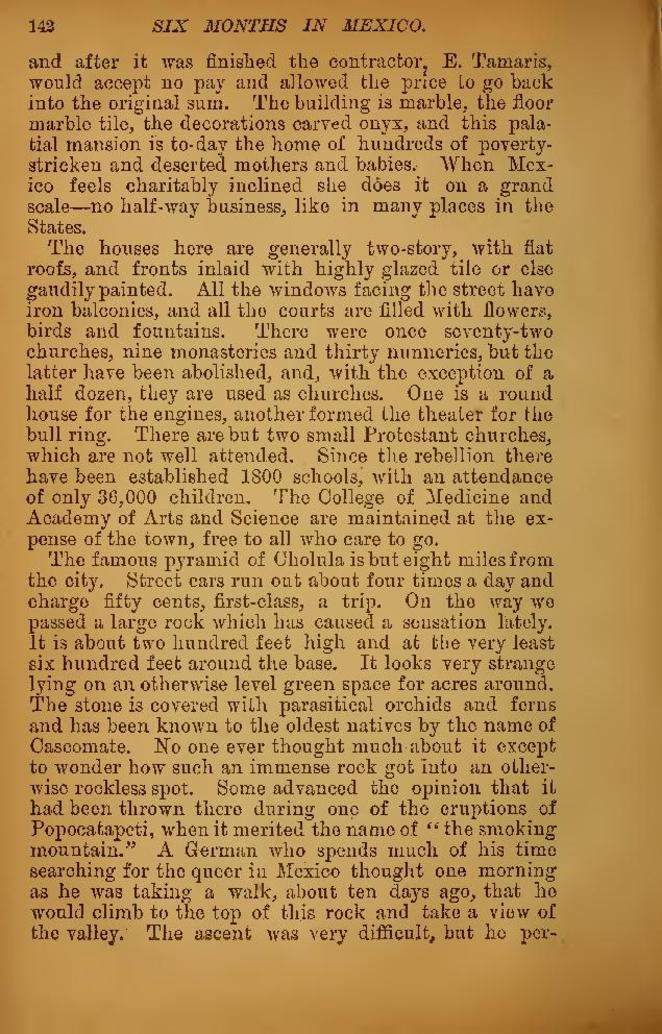and after it was finished the contractor, E. Tamaris, would accept no pay and allowed the price to go back into the original sum. The building is marble, the floor marble tile, the decorations carved onyx, and this palatial mansion is to-day the home of hundreds of poverty stricken and deserted mothers and babies. When Mexico feels charitably inclined she does it on a grand scale—no half-way business, like in many places in the States.
The houses here generally two-story, with flat roofs, and fronts inlaid with highly glazed tile or else gandily painted. All the windows facing the street have iron balconies, and all the courts are filled with flowers, birds and fountains. There were once seventy-two churches, nine monasteries and thirty nunneries, but the latter have been abolished, and, with the exception of a half dozen, they are used as churches. One is a round house for the engines, another formed the theater for the bull ring. There are but two small Protestant churches, which are not well attended. Since the rebellion there have been established 1800 schools, with an attendance of only 36,000 children. The College of Medicine and Academy of Arts and Science are maintained at the expense of the town, free to all who care to go.
The famous pyramid of Cholula is but eight miles from the city. Street cars run out about four times a day and charge fifty cents, first-class, a trip. On the way we passed a large rock which has caused a sensation lately. It is about two hundred feet high and at the very least six hundred feet around the base. It looks very strange lying on an otherwise level green space for acres around. The stone is covered with parasitical orchids and ferns and has been known to the oldest natives by the name of Cascomate. No one ever thought much about it except to wonder how such an immense rock got into an otherwise reckless spot. Some advanced the opinion that it had been thrown there during one of the eruptions of Popocatapeti, when it merited the name of "the smoking mountain." A German who spends much of his time searching for the queer in Mexico thought one morning as he was taking a walk, about ten days ago, that he would climb to the top of this rock and take a view of the valley. The ascent was very difficult, but he per-
